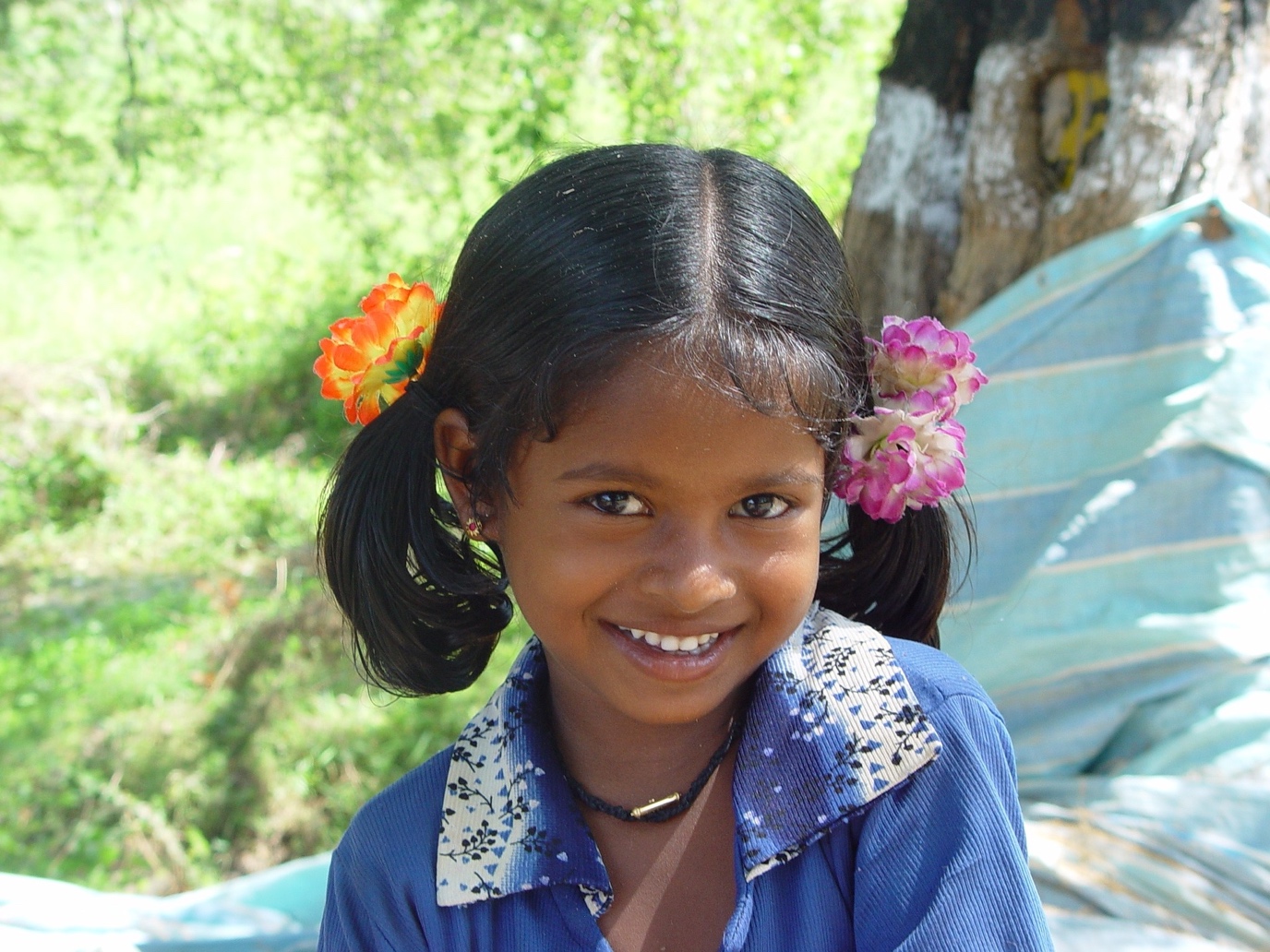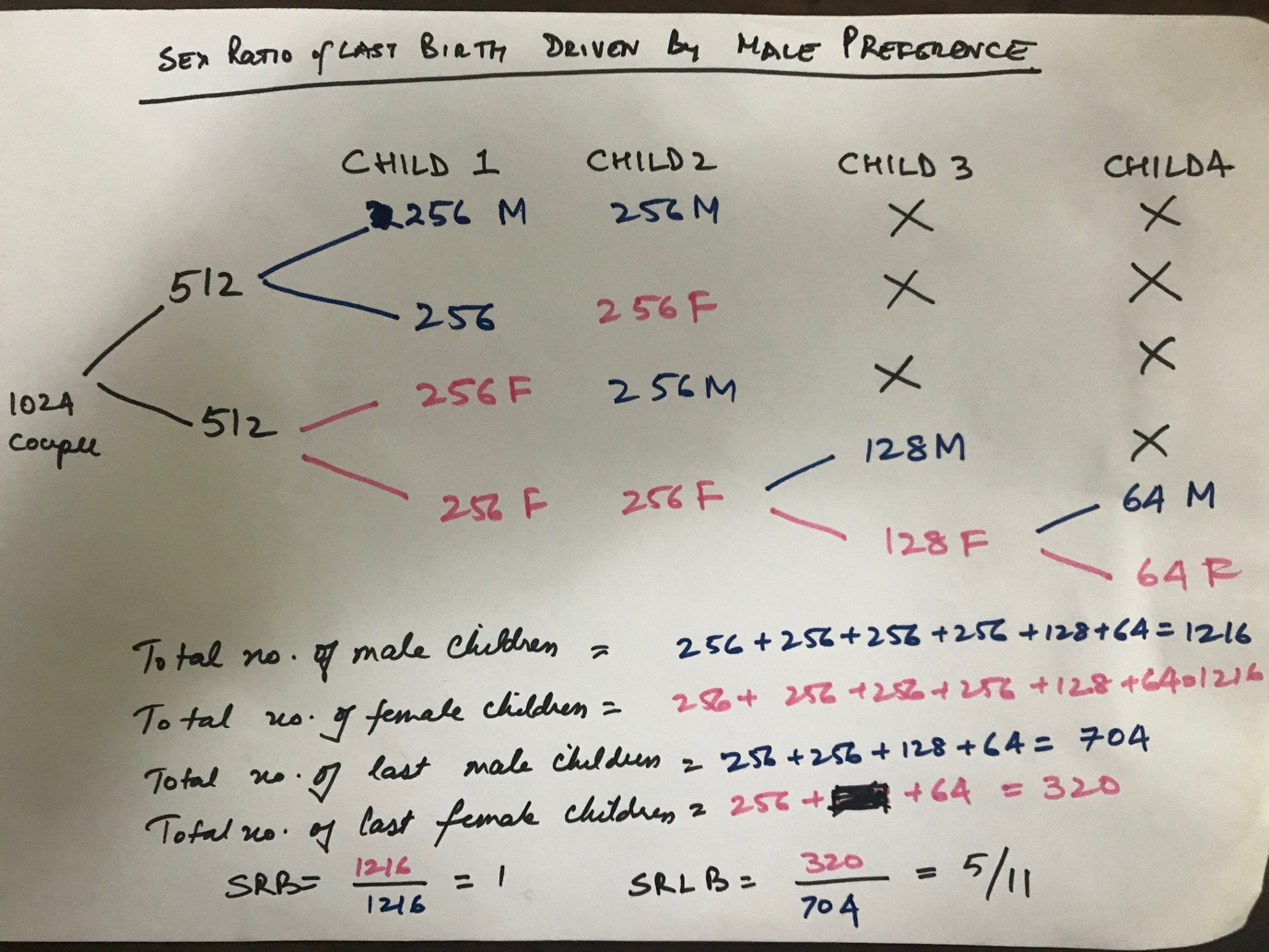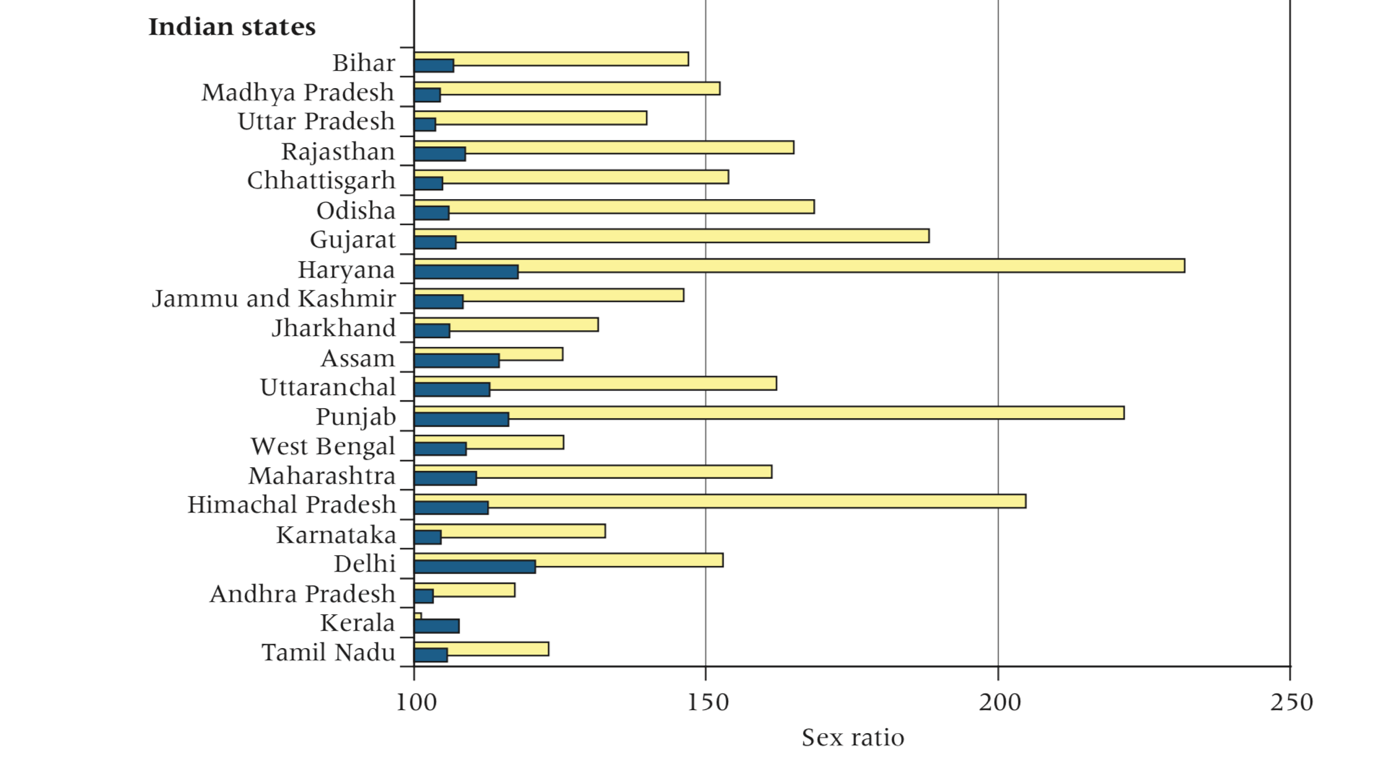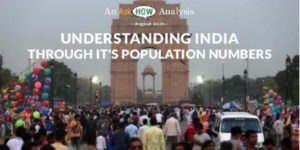Is Haryana becoming Kerala?featured
This is the eighth post in a series on population in India. Each post can be read independently. The links for the first seven posts are at the bottom of this one.
Ms. Smriti Irani recently claimed that India has improved its Sex Ratio at Birth (SRB) from 918 in 2014-15 to 931 in 2018-19. Haryana, which has had the worst SRB, made striking improvements. This report suggests that the SRB in the state had gone up from low 800s to 923 in 2019! In other words, in 2019 there were 923 girl child births in Haryana, for every 1,000 boy child births. These improvements, if true, are astonishingly positive. The big question is, if the improvements are indeed true. Is Haryana becoming like Kerala, a state which has always had a high SRB? I try to answer this question in this post.

For representational purposes only. Picture credit: Pixabay
The basics
India discriminates against women as I stated in my last post. The Population Sex Ratio (PSR) in the country, or the ratio of females to males, has been lower than the world average for at least the last 70 years. In the first few decades after independence it was due to excess female mortality, especially in the very young. Since 1980’s, Sex Selective Abortion has started taking over as the main cause of low PSR.
There is a wide difference in Sex Ratio at Birth (SRB) across states of India. NITI Ayog reported that in 2014- 2016, SRB in Haryana was 832 whereas it was 959 in Kerala. It is generally agreed that if there is no sex selective abortion, the SRB would be between 942 and 953. The following table gives the ratio in the for a few of the larger states.

Source: Healthy States Progressive India, Niti Ayog (page 44)
As can be seen, the Southern and Eastern states have a much better SRB as compared to the Northern and Western states. Although, the Southern states are economically better off than average, prosperity itself is no determinant of low SRB. The Northern states of Punjab and Haryana are relatively prosperous but have SRBs which are lower than national average. Haryana being the worst in the country.
As I discussed, low SRBs in a society are a function of strong preference for sons accompanied by prosperity that allows for spread of technologies for sex determination of foetus and abortion. There is strong preference for sons in many Indian states. It is specially so in Haryana.
Preference for sons
The preference for sons in a society can be exercised in one of two ways. The first way is use of contraception. A couple may decide to have a target number of children as long as at least one of them is a son. The couple would use contraception once they have the target number of kids, if at least one of them is male. Let us illustrate the arithmetic behind contraception method with an example.
Suppose there are a 1,024 couples who target to have 2 kids as long as at least one of them is male. That is, if they have at least one male child in the two, they would start using contraception. If both their first two kids are female, they would have one more kid and stop if the third kid is male. If the third kid is female, they would have one more kid. The couple stops having kids after the 4th and uses contraception regardless of whether the fourth kid is male or female. The following image details the outcome.

Note, for the sake of simplicity, I have assumed that it is equally likely that the couple have a male or a female child although the probability of bearing a male child is marginally higher.
As can be seen, contraception method does not change the SRB of a population. The method does make the last child much more likely to be male. This skews the Sex Ratio of Last Birth (SRLB).
In a paper published in 2013, John Bongart plotted the actual Sex Ratio at Birth and the SRLB of last birth for 29 Indian states. I have reproduced the image below

As can be seen, the SLRB is low (high in chart) for the states of North and West with the lowest in Haryana (highest in chart). The data in this chart is from 2004-05 but as the SRB in Haryana was 832 even in 2014-16, it is clear that the culture hadn’t changed till then.
The second method used by couples to exercise their son preference is to determine the sex of their foetus and abort it if it is female. This Sex Selective Abortion is more common in societies with low fertility – China being a prime example. Internationally, only South Korea has been able to reverse a fall in SRB caused by Sex Selective Abortion.
So did Haryana with its preference for sons, really manage to correct its SRB so sharply post 2014-16? To take another step in answering this question we should look at data sources.
The data muddle
The NITI Ayog relied on Sample Registration System (SRS) in its report quoted earlier. Unfortunately, I haven’t been able to locate any SRS reports post 2016 that give out state wise SRB. So what has the government relied on when it has talked about the improvements in SRS?
According to this report, MS. Smriti Irani was quoting the data compiled by the ministry which was drawn from the Health Management Information System (HMIS) updated by Anganwadi and Asha workers. This considers home deliveries and births in government institutions only. It lacks information from private hospitals and institutions.
Another source of data has been the Civil Registration System (CRS). The Indian Express report quoted earlier, relied on this. Unfortunately, I have no idea how reliable these two data sources are. The Express reports says that the SRB in 2014 for Haryana was 871 whereas it was 831 according to the NITI Ayog. So clearly, there is a discrepancy in CRS and SRS. Of course, it is possible that more recent SRS data may show the same positive trend even though there may be differences in the year by year figures.
Discussion
The government has claimed that SRB has increased very sharply for India and particularly for Haryana. If corroborated, this would be an astonishing achievement. However, the claims of the government depend on data sources which may not be reliable. In recent history, the only place to see a reversal of SRB declines is South Korea. In this context, the really sharp increases reported could be too good to be true.
So am I saying that there is no progress in Haryana? Not really. All I am saying is that we should wait for more reliable data like the 2018-19 National Family Health Survey or even the census data. If these sources verify that there is progress, even if it is not to the extent claimed, then the country would have done very well. Till then, we can only be cautiously optimistic.
___________
Author –
Yogesh Upadhyaya
(Yogesh Upadhyaya is one of the founders of AskHow India. Blogs are personal views.)
You can follow AskHow India (@AskHowIndia) or me (@Uppi89) on twitter or me on LinkedIn
This is the eighth in a series on population. The first seven articles can be found here
- Everything you wanted to know about population (but were too lazy to Google).
- Are the Acche Din of population growth already here?
- Chhath — the new national festival?
- Economic migration in India — The Who, the Why and other good stuff.
- Islam and population growth in India.
- Migration and political demography in Assam
- Missing women in India.



